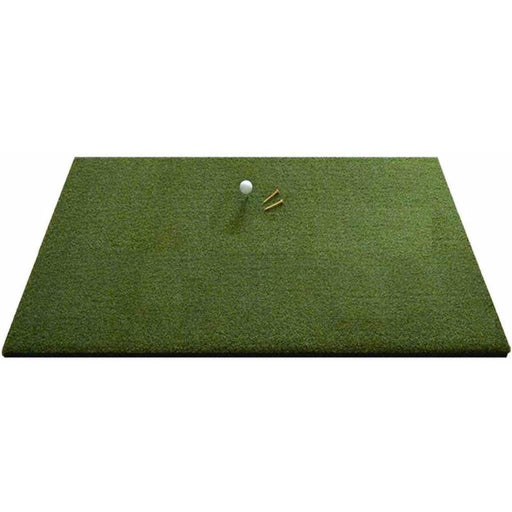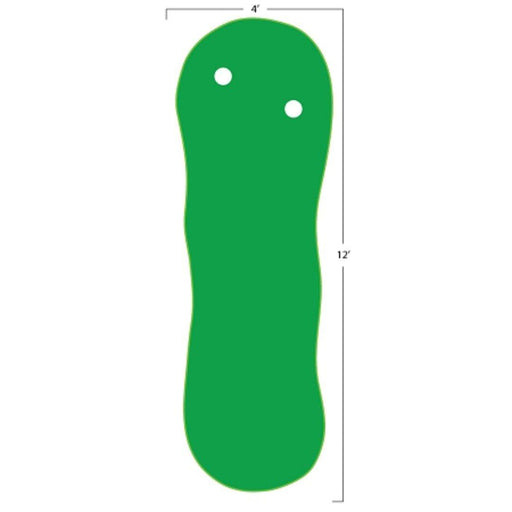
A Chronicle of the History of Golf Simulators
Golf, a sport known for its rich history and traditions, has seen a remarkable transformation with the advent of technology. The journey of golf simulators, from humble beginnings to sophisticated virtual environments, is a fascinating exploration of how innovation has redefined the way golf is practiced and enjoyed. In this blog post, we'll embark on a journey through time, tracing the history of golf simulators and their evolution into the immersive and high-tech experiences we know today.
Early Beginnings:
The roots of golf simulators can be traced back to the mid-20th century, with the emergence of rudimentary systems that aimed to provide golfers with a simulated experience. These early simulators often relied on basic sensors and projections to replicate the sensation of playing on a golf course.
- Electromechanical Simulators (1970s-1980s):
- The first significant leap in golf simulator technology occurred in the 1970s and 1980s with the introduction of electromechanical simulators. These systems utilized sensors to track the path and impact of the golf ball, providing users with basic feedback on their shots.
- Video-Based Simulators (1990s):
- The 1990s saw a paradigm shift with the advent of video-based golf simulators. These systems used cameras to capture the golfer's swing and projected a virtual representation of the golf course onto a screen. While still relatively basic, these simulators marked a significant improvement in realism and accuracy.
Advancements in the 21st Century:
The 21st century witnessed a rapid evolution in golf simulator technology, driven by advancements in computing power, graphics, and sensor technology. This period saw the emergence of sophisticated, high-definition simulators that aimed to replicate the golfing experience with unparalleled accuracy.
- 3D Graphics and Realism (2000s):
- The early 2000s brought a surge in 3D graphics technology, allowing golf simulators to create highly realistic virtual environments. Golfers could now experience detailed renditions of famous courses, complete with accurate topography, hazards, and weather conditions.
- Launch Monitors and Swing Analysis (2010s):
- The 2010s witnessed the integration of launch monitors and swing analysis technology into golf simulators. These devices provided golfers with comprehensive data on club speed, ball spin, launch angle, and more. Launch monitors became an essential component of high-end simulator setups, offering valuable insights for performance improvement.
- Multi-Sport Simulators and Virtual Reality (Present):
- In the present day, golf simulators have transcended their original purpose, evolving into multi-sport platforms that offer experiences beyond golf. Virtual reality (VR) has also entered the scene, providing users with immersive and interactive golfing environments that go beyond the limitations of traditional screens.
Future Prospects:
Looking ahead, the future of golf simulators holds exciting prospects. With ongoing advancements in AI, AR, and environmental considerations, golfers can anticipate even more personalized, realistic, and sustainable simulator experiences.
A New Horizon in Golfing
In conclusion, the history of golf simulators is a testament to the ever-evolving intersection of technology and sports. From the basic electromechanical systems of the past to the immersive, data-driven experiences of today, golf simulators have transformed the way golf is practiced, making the sport more accessible and enjoyable for enthusiasts worldwide. As we stand at the cusp of a new horizon in golfing, the journey of golf simulators continues to unfold, promising a future where the virtual and the real seamlessly converge on the green.

Have Questions About Golf Simulators?
Our expert team is here to help you find the perfect golf simulator for your needs.
Featured products
-
SkyTrak+
Original price $2,995.00 - Original price $3,145.00Original price$2,995.00 - $3,145.00$2,995.00 - $3,145.00Current price $2,995.00Introducing the SkyTrak+ Launch Monitor: Unmatched Accuracy and Advanced Features Experience a new level of precision and innovation with the SkyTr...
View full details -
ProTee Majestic Simulator Package
Original price $9,618.00 - Original price $13,848.00Original price$9,618.00 - $13,848.00$9,618.00 - $13,848.00Current price $9,618.00ProTee Majestic Golf Simulator Package: Elevate Your Indoor Golf Experience Transform your home or business into a golfer’s dream with the ProTee M...
View full details -
Eagle Golf Mat
Original price $370.00 - Original price $1,130.00Original price $370.00$370.00$370.00 - $1,130.00Current price $370.00Introducing the Eagle Golf Mat: The Ultimate Golf Experience Are you passionate about golf and demand nothing but the very best in your practice eq...
View full details -
Retractable HomeCourse® Golf ProScreen 180
Original price $2,299.00Original price $2,299.00 - Original price $2,299.00Original price $2,299.00Current price $1,999.00$1,999.00 - $1,999.00Current price $1,999.00HomeCourse® Golf ProScreen 180 HomeCourse® Golf ProScreen 180 is a retractable golf screen and enclosure. HomeCourse® Golf ProScreen 180's ballisti...
View full details -
The Augusta V2 4'x12' 2 Cups
Original price $399.00Original price $399.00 - Original price $399.00Original price $399.00Current price $329.00$329.00 - $329.00Current price $329.00The Augusta is one of Big Moss’ traditional models. It offers unmatched versatility for teaching and year round practice. Make a long-term investme...
View full details





